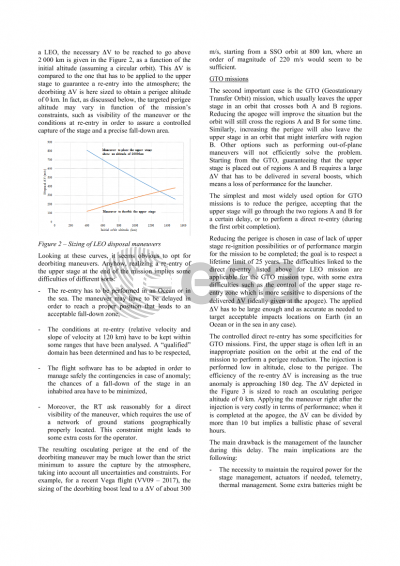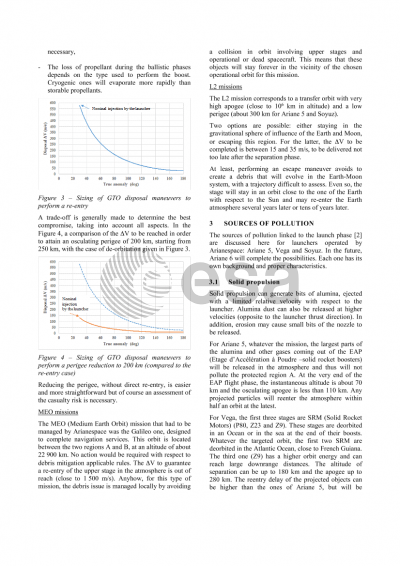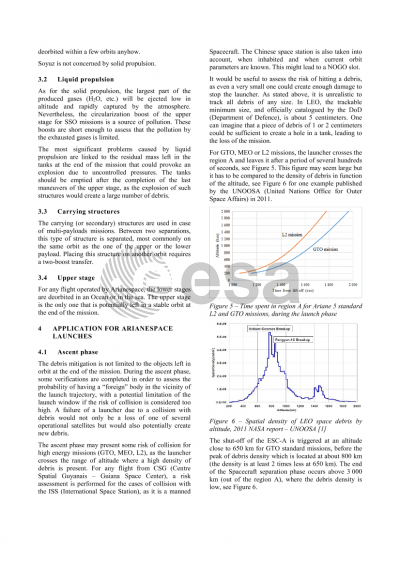Document details

Abstract
Space Debris Management of Launch Operations
Alexis Macaire – Arianespace
Abstract
Orbital debris is becoming a serious challenge for space applications, considering the ever increasing activity in this field since the sixties. This paper deals with two aspects: the risk during the launch and the means to mitigate the outcome of each launch in terms of the number and the characteristics of debris left in space at the end of the (short) mission of the launcher.
Arianespace is now operating three launch vehicles from the CSG launch base in French Guiana and has is of the major actors in space debris management.
During the ascent phase, some verifications are completed in order to assess the probability of having a “foreign” body in the vicinity of the launch trajectory, with a potential limitation of the launch window if the risk of collision is considered too high. A failure of a launcher due to a collision with debris would not only be a loss of one of several operational satellites but would also potentially create new debris. For any flight from CSG, a check is performed concerning the risk of collision with the ISS or with the Chinese space station, i.e., with manned spacecraft.
The LOS (Lois sur les Opérations Spatiales, French Space Operation Act) is applicable for any launcher operated from French territories. One important rule is to avoid leaving used stages in the predefined zones around the Earth after the end of the mission. These “protected regions” are the LEO (region A: Low Earth orbit, with an altitude below 2 000 km) and the GEO (region B: Geostationary orbit, with an altitude range of ±200 km and a latitude range of ±15 deg).
In case it is inevitable to end up with stage(s) and/or carrying structure(s) that will be left in the region A (or crossing it regularly), it should be demonstrated that it (they) will reenter in the atmosphere and ideally burn out before reaching low altitudes endangering planes and inhabited areas. In answer to this context, the mission analyses performed by Arianespace have been progressively adapted in the past years to limit more extensively the creation of new debris. With the recent apparition of Soyuz and Vega in the landscape of launchers operated by Arianespace, the complexity of the missions has increased. However, caring for the pollution of space may result in the reduction of the performance of the mission in terms of the final payload mass and may also constrain the operational launch window.
In any case, if the upper stage is placed in an injection orbit presenting a lifetime around the Earth of several months or years, the tanks are emptied in order to reduce the risk of explosion, which could potentially create a large number of debris.
The development of the new European launcher Ariane 6 takes into account the debris constraint from the beginning and the upper stage should be deorbited systematically if the performance capability is sufficient, which should be the case for the standard GTO mission.
Preview








